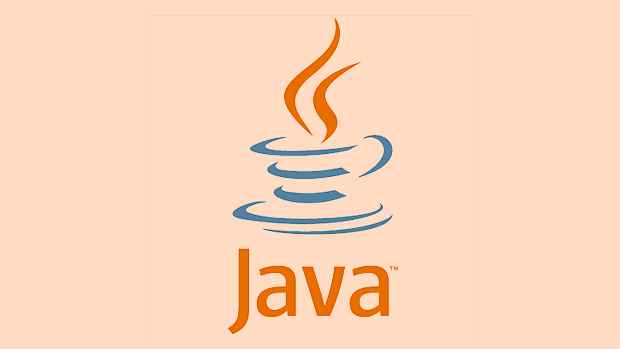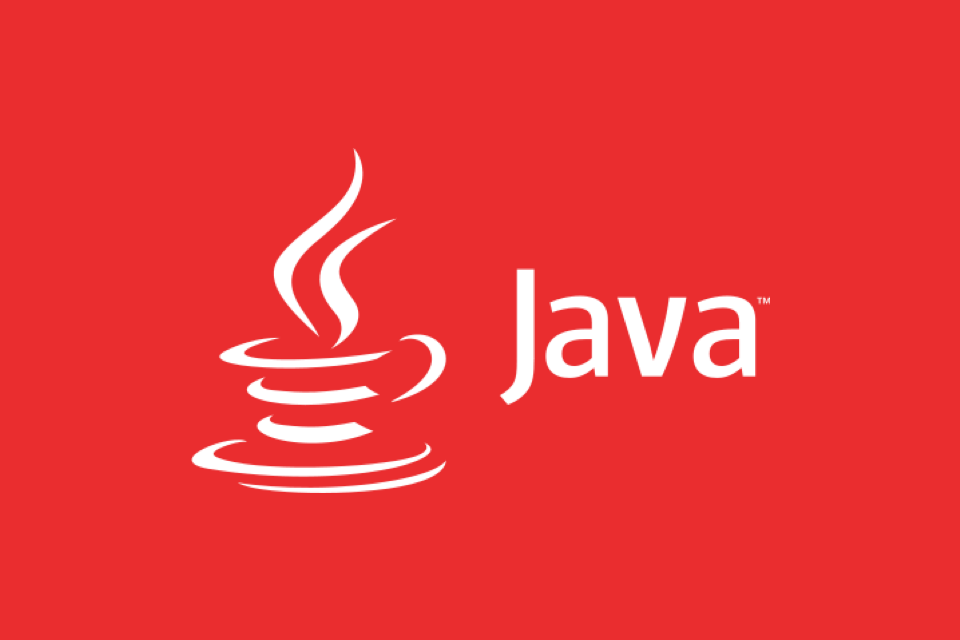Java Integration with Apache Kafka for Event-Driven Architectures
Jul 25, 2025 am 12:16 AMJava integration with Apache Kafka is essential for building scalable, real-time event-driven architectures. 1. Java works well with Kafka due to native client support, strong typing, and seamless integration with enterprise frameworks like Spring Boot. 2. To produce messages, configure a KafkaProducer with proper serializers and use asynchronous send with callbacks for performance, ensuring flush() is called before closing. 3. For consuming, use KafkaConsumer with consumer groups, manually commit offsets via commitSync() for at-least-once delivery, and handle deserialization errors using schema registries. 4. Enhance development speed with Spring Boot’s @KafkaListener and spring-kafka, which simplify configuration, error handling, and concurrency. Key best practices include designing for fault tolerance with retries and dead-letter topics, monitoring consumer lag, and using structured data formats like Avro or JSON, ensuring robust, loosely coupled systems that react in real time.

Java integration with Apache Kafka is a cornerstone of modern event-driven architectures (EDAs), enabling scalable, resilient, and real-time data pipelines. Kafka acts as a distributed event streaming platform, and Java—being one of the most widely used backend languages—offers robust, native support for producing and consuming messages efficiently.

Here’s how Java fits into Kafka-based event-driven systems and what you need to know to implement it effectively.
1. Why Java Kafka Works Well for Event-Driven Systems
Java has long been a dominant language in enterprise systems, and Kafka was originally written in Scala and Java. This heritage means:

-
Native client libraries: The official Kafka clients (
kafka-clients) are Java-based, making integration seamless. - Strong ecosystem support: Frameworks like Spring Boot, Micronaut, and Quarkus offer first-class Kafka integration.
- High performance and reliability: Java’s mature runtime and garbage collection tuning make it suitable for high-throughput messaging.
- Strong typing and tooling: Compile-time checks and IDE support reduce runtime errors in message handling.
In an event-driven architecture, services communicate via events (messages) rather than direct calls. Kafka serves as the central nervous system, and Java applications act as producers and consumers.
2. Setting Up a Java Kafka Producer
To send events to Kafka from a Java application, you create a KafkaProducer. Here's a minimal example:

import org.apache.kafka.clients.producer.*;
import java.util.Properties;
public class KafkaEventProducer {
public static void main(String[] args) {
Properties props = new Properties();
props.put("bootstrap.servers", "localhost:9092");
props.put("key.serializer", "org.apache.kafka.common.serialization.StringSerializer");
props.put("value.serializer", "org.apache.kafka.common.serialization.StringSerializer");
Producer<String, String> producer = new KafkaProducer<>(props);
ProducerRecord<String, String> record = new ProducerRecord<>(
"user-events",
"user-123",
"User registered at 2025-04-05"
);
producer.send(record, (metadata, exception) -> {
if (exception != null) {
System.err.println("Send failed: " exception.getMessage());
} else {
System.out.printf("Message sent to %s offset %d%n", metadata.topic(), metadata.offset());
}
});
producer.flush();
producer.close();
}
}Key Notes:
- Use
send()asynchronously with a callback for better performance. - Always call
flush()before closing to ensure all messages are sent. - For structured data, serialize objects using JSON, Avro, or Protobuf.
3. Building a Java Kafka Consumer
Consumers read events from Kafka topics and react to them. A basic consumer looks like this:
import org.apache.kafka.clients.consumer.*;
import java.time.Duration;
import java.util.Collections;
import java.util.Properties;
public class KafkaEventConsumer {
public static void main(String[] args) {
Properties props = new Properties();
props.put("bootstrap.servers", "localhost:9092");
props.put("group.id", "user-service-group");
props.put("key.deserializer", "org.apache.kafka.common.serialization.StringDeserializer");
props.put("value.deserializer", "org.apache.kafka.common.serialization.StringDeserializer");
props.put("auto.offset.reset", "earliest");
Consumer<String, String> consumer = new KafkaConsumer<>(props);
consumer.subscribe(Collections.singletonList("user-events"));
try {
while (true) {
ConsumerRecords<String, String> records = consumer.poll(Duration.ofMillis(100));
for (ConsumerRecord<String, String> record : records) {
System.out.printf("Received: key=%s, value=%s, topic=%s, partition=%d, offset=%d%n",
record.key(), record.value(), record.topic(), record.partition(), record.offset());
// Process event (e.g., update DB, trigger notification)
}
consumer.commitSync(); // Sync commit after processing
}
} finally {
consumer.close();
}
}
}Best Practices:
- Use consumer groups for scalability and fault tolerance.
- Choose offset management:
commitSync()for at-least-once delivery, orenable.auto.commit=falsefor manual control. - Handle deserialization errors gracefully—consider using a schema registry (e.g., Confluent Schema Registry) with Avro.
4. Enhancing Integration with Spring Boot
For faster development, use Spring for Apache Kafka (spring-kafka). It simplifies configuration and adds annotations like @KafkaListener.
Example:
@Service
public class UserEventConsumer {
@KafkaListener(topics = "user-events", groupId = "user-service-group")
public void handleUserEvent(String message) {
System.out.println("Received event: " message);
// Business logic here
}
}With application.yml:
spring:
kafka:
bootstrap-servers: localhost:9092
consumer:
group-id: user-service-group
auto-offset-reset: earliestSpring handles threading, error handling, and serialization automatically.
Final Thoughts
Java remains one of the most effective languages for integrating with Apache Kafka in event-driven systems. Whether you're building microservices, real-time analytics pipelines, or CQRS/Event Sourcing systems, Java’s stability and Kafka’s scalability form a powerful combination.
Key takeaways:
- Use the official Kafka Java client for fine-grained control.
- Leverage Spring Boot for rapid development and production-ready features.
- Design for fault tolerance: handle retries, dead-letter topics, and schema evolution.
- Monitor consumer lag and throughput in production.
With the right patterns, Java Kafka can form the backbone of a responsive, loosely coupled, and scalable architecture.
Basically, it's not just about sending messages—it's about building systems that react.
The above is the detailed content of Java Integration with Apache Kafka for Event-Driven Architectures. For more information, please follow other related articles on the PHP Chinese website!

Hot AI Tools

Undress AI Tool
Undress images for free

Undresser.AI Undress
AI-powered app for creating realistic nude photos

AI Clothes Remover
Online AI tool for removing clothes from photos.

Clothoff.io
AI clothes remover

Video Face Swap
Swap faces in any video effortlessly with our completely free AI face swap tool!

Hot Article

Hot Tools

Notepad++7.3.1
Easy-to-use and free code editor

SublimeText3 Chinese version
Chinese version, very easy to use

Zend Studio 13.0.1
Powerful PHP integrated development environment

Dreamweaver CS6
Visual web development tools

SublimeText3 Mac version
God-level code editing software (SublimeText3)
 Asynchronous Programming Techniques in Modern Java
Jul 07, 2025 am 02:24 AM
Asynchronous Programming Techniques in Modern Java
Jul 07, 2025 am 02:24 AM
Java supports asynchronous programming including the use of CompletableFuture, responsive streams (such as ProjectReactor), and virtual threads in Java19. 1.CompletableFuture improves code readability and maintenance through chain calls, and supports task orchestration and exception handling; 2. ProjectReactor provides Mono and Flux types to implement responsive programming, with backpressure mechanism and rich operators; 3. Virtual threads reduce concurrency costs, are suitable for I/O-intensive tasks, and are lighter and easier to expand than traditional platform threads. Each method has applicable scenarios, and appropriate tools should be selected according to your needs and mixed models should be avoided to maintain simplicity
 Best Practices for Using Enums in Java
Jul 07, 2025 am 02:35 AM
Best Practices for Using Enums in Java
Jul 07, 2025 am 02:35 AM
In Java, enums are suitable for representing fixed constant sets. Best practices include: 1. Use enum to represent fixed state or options to improve type safety and readability; 2. Add properties and methods to enums to enhance flexibility, such as defining fields, constructors, helper methods, etc.; 3. Use EnumMap and EnumSet to improve performance and type safety because they are more efficient based on arrays; 4. Avoid abuse of enums, such as dynamic values, frequent changes or complex logic scenarios, which should be replaced by other methods. Correct use of enum can improve code quality and reduce errors, but you need to pay attention to its applicable boundaries.
 Understanding Java NIO and Its Advantages
Jul 08, 2025 am 02:55 AM
Understanding Java NIO and Its Advantages
Jul 08, 2025 am 02:55 AM
JavaNIO is a new IOAPI introduced by Java 1.4. 1) is aimed at buffers and channels, 2) contains Buffer, Channel and Selector core components, 3) supports non-blocking mode, and 4) handles concurrent connections more efficiently than traditional IO. Its advantages are reflected in: 1) Non-blocking IO reduces thread overhead, 2) Buffer improves data transmission efficiency, 3) Selector realizes multiplexing, and 4) Memory mapping speeds up file reading and writing. Note when using: 1) The flip/clear operation of the Buffer is easy to be confused, 2) Incomplete data needs to be processed manually without blocking, 3) Selector registration must be canceled in time, 4) NIO is not suitable for all scenarios.
 How Java ClassLoaders Work Internally
Jul 06, 2025 am 02:53 AM
How Java ClassLoaders Work Internally
Jul 06, 2025 am 02:53 AM
Java's class loading mechanism is implemented through ClassLoader, and its core workflow is divided into three stages: loading, linking and initialization. During the loading phase, ClassLoader dynamically reads the bytecode of the class and creates Class objects; links include verifying the correctness of the class, allocating memory to static variables, and parsing symbol references; initialization performs static code blocks and static variable assignments. Class loading adopts the parent delegation model, and prioritizes the parent class loader to find classes, and try Bootstrap, Extension, and ApplicationClassLoader in turn to ensure that the core class library is safe and avoids duplicate loading. Developers can customize ClassLoader, such as URLClassL
 Handling Common Java Exceptions Effectively
Jul 05, 2025 am 02:35 AM
Handling Common Java Exceptions Effectively
Jul 05, 2025 am 02:35 AM
The key to Java exception handling is to distinguish between checked and unchecked exceptions and use try-catch, finally and logging reasonably. 1. Checked exceptions such as IOException need to be forced to handle, which is suitable for expected external problems; 2. Unchecked exceptions such as NullPointerException are usually caused by program logic errors and are runtime errors; 3. When catching exceptions, they should be specific and clear to avoid general capture of Exception; 4. It is recommended to use try-with-resources to automatically close resources to reduce manual cleaning of code; 5. In exception handling, detailed information should be recorded in combination with log frameworks to facilitate later
 How does a HashMap work internally in Java?
Jul 15, 2025 am 03:10 AM
How does a HashMap work internally in Java?
Jul 15, 2025 am 03:10 AM
HashMap implements key-value pair storage through hash tables in Java, and its core lies in quickly positioning data locations. 1. First use the hashCode() method of the key to generate a hash value and convert it into an array index through bit operations; 2. Different objects may generate the same hash value, resulting in conflicts. At this time, the node is mounted in the form of a linked list. After JDK8, the linked list is too long (default length 8) and it will be converted to a red and black tree to improve efficiency; 3. When using a custom class as a key, the equals() and hashCode() methods must be rewritten; 4. HashMap dynamically expands capacity. When the number of elements exceeds the capacity and multiplies by the load factor (default 0.75), expand and rehash; 5. HashMap is not thread-safe, and Concu should be used in multithreaded
 Explained: Java Polymorphism in Object-Oriented Programming
Jul 05, 2025 am 02:52 AM
Explained: Java Polymorphism in Object-Oriented Programming
Jul 05, 2025 am 02:52 AM
Polymorphism is one of the core features of Java object-oriented programming. Its core lies in "one interface, multiple implementations". It implements a unified interface to handle the behavior of different objects through inheritance, method rewriting and upward transformation. 1. Polymorphism allows the parent class to refer to subclass objects, and the corresponding methods are called according to the actual object during runtime; 2. The implementation needs to meet the three conditions of inheritance relationship, method rewriting and upward transformation; 3. It is often used to uniformly handle different subclass objects, collection storage and framework design; 4. When used, only the methods defined by the parent class can be called. New methods added to subclasses need to be transformed downward and accessed, and pay attention to type safety.
 Effective Use of Java Enums and Best Practices
Jul 07, 2025 am 02:43 AM
Effective Use of Java Enums and Best Practices
Jul 07, 2025 am 02:43 AM
Java enumerations not only represent constants, but can also encapsulate behavior, carry data, and implement interfaces. 1. Enumeration is a class used to define fixed instances, such as week and state, which is safer than strings or integers; 2. It can carry data and methods, such as passing values ??through constructors and providing access methods; 3. It can use switch to handle different logics, with clear structure; 4. It can implement interfaces or abstract methods to make differentiated behaviors of different enumeration values; 5. Pay attention to avoid abuse, hard-code comparison, dependence on ordinal values, and reasonably naming and serialization.






